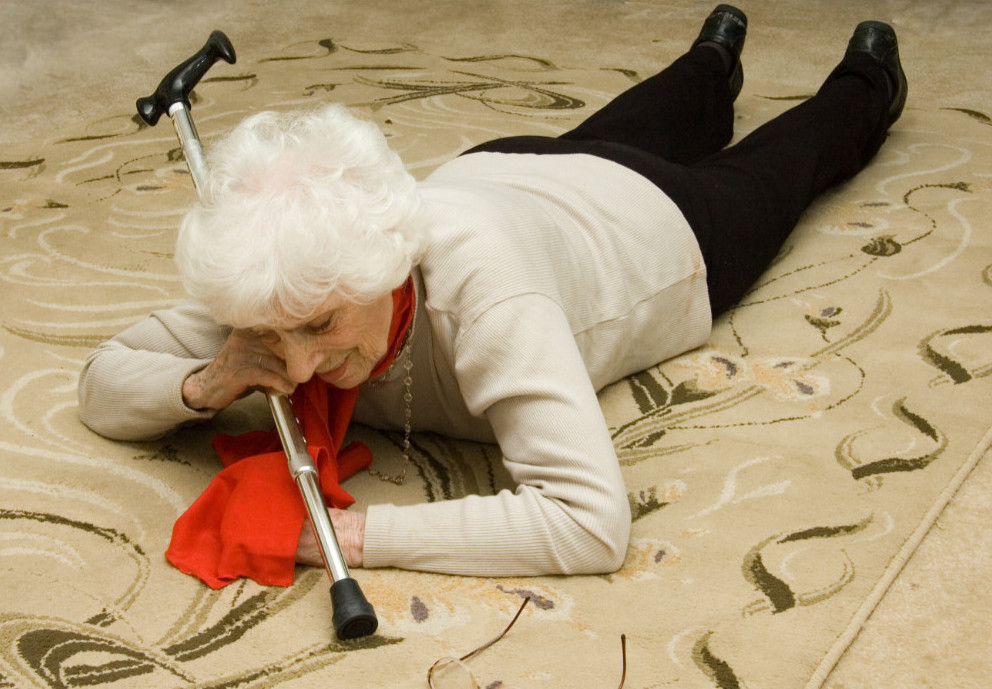Did you know that over 70 senior citizens die from falling accidents in the United States every day? Falling accidents are the primary cause of death and injury amongst senior adults. If seniors are lucky enough to survive a fall, they usually get head trauma and broken bones.
One of the main reasons older adults don’t exercise as much is fear of falling. If you’re a young person, moving around and exercising doesn’t seem like a big deal. But for an older person, moving is a very big deal. All it takes is one wrong movement or wet surface for a senior to slip, fall and injure themselves.
So why do seniors fall often? Perhaps it is due to being weaker than younger people. Older people also have deteriorated bones, which makes them fragile. That is why it only takes one small fall for a senior to break a bone or two. Once that happens, their quality of life is ruined.
Here are the most common reasons for seniors falling and getting injured:
- Muscle weakness
- Low energy
- Bad eyesight
- Bad flexibility
- Medication side effects (e.g., dizziness)
- Mental health issues (e.g., confusion, paranoia)
- Slippery surfaces
- Chronic conditions
- Weak bones
- Environmental hazards
Furthermore, seniors have to contend with the expensive medical costs of this country’s healthcare system. Since many seniors live on a limited income, a slip and fall accident could wipe them out financially if they go to the hospital for care. It is just a bad situation all around.
Medicaid and Medicare may cover some seniors, but not every senior in the United States has access to these benefits. For this reason, primary care doctors must do a better job of treating senior patients with preventive care solutions. It is the best chance to reduce their risk of falling.
The Top Solutions to Reduce the Risk of Seniors Falling
A value-based healthcare model is the best way to prevent seniors from falling and injuring themselves. Doctors and patients have longer sessions together, so the doctor can get more familiar with the patient and their health status. New patients will typically spend 40 minutes with their doctor, while recurring patients spend 30 minutes.
When you see your doctor for the first time, let them know about your tendency or risk of falling. Give the doctor as much information as possible about your physical and mental health status and history. This information will help them diagnose the cause of the problem.
The key is to make regular appointments with the doctor. A good doctor may even give you their cell phone number so that you can reach them outside of their office too. This may seem like an old-fashioned thing to do, but there are doctors under the value-based model who do care enough to take your calls outside of work.
If that isn’t surprising enough, how about the idea of a doctor getting permission from the patient to contact their family members and discuss their health issues with them? Often, the family members of seniors are not aware of the seriousness of slip and fall accidents. They assume it causes a minor bump or bruise, and that is all. But, it is much more severe than that.
The doctor will explain what can happen to their senior loved one if they fall or develop other health conditions or injuries. Sometimes it can lead to infections, brain trauma, or other serious injuries which require hospitalization. If the family gets involved, the patient may be more willing to take the doctor’s advice because the family members will assist with the preventive care. This will keep the patient out of the hospital.
Eliminate the Risk Factors
Primary Medical Care Center has doctors who can address all the risks factors of fall accidents for senior patients. When you or your loved one comes to us for an appointment, you will receive an evaluation to determine your particular fall risk factors.
We will want to know things like:
- Do you exercise regularly?
- Do you have nonslip soles in your shoes?
- Do you have physical or mobility issues?
- Do you have vision problems?
- Are you hard of hearing?
- Do you take medications and experience side effects?
These are all critical questions that must get answered. Once your doctor receives the answers, it will be easier to pinpoint your main risk factors for fall accidents. Then solutions to overcome these risk factors can be executed, such as new medication o or physical therapy.
In the meantime, it is okay to use a cane or walker until you can build more strength and functionality in your muscles, bones, and mental coordination. At least it will help prevent fall accidents and keep you out of the hospital.
Make an Appointment to See a Doctor
Primary Medical Care Center has a team of doctors who work together to develop solutions for patients’ health problems and risk factors. We will do everything we can to prevent you from falling again.
Call us at 305-751-1500 to schedule your appointment today.
